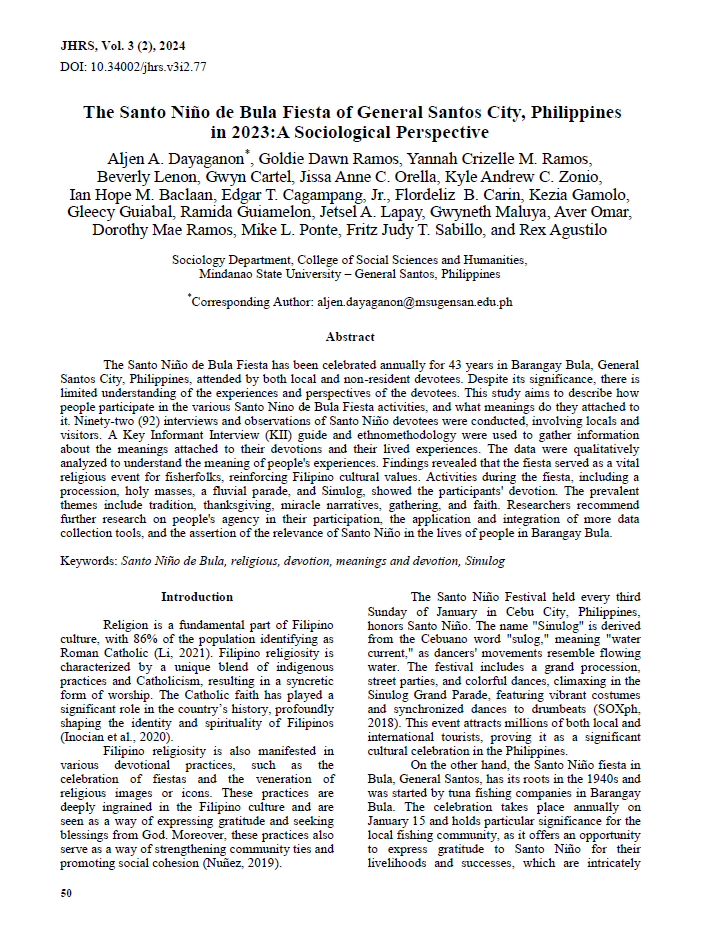The Santo Niño de Bula Fiesta of General Santos City, Philippines in 2023: A Sociological Perspective
Abstract
The Santo Niño de Bula Fiesta has been celebrated annually for 43 years in Barangay Bula, General Santos City, Philippines, attended by both local and non-resident devotees. Despite its significance, there is limited understanding of the experiences and perspectives of the devotees. This study aims to describe how people participate in the various Santo Nino de Bula Fiesta activities, and what meanings do they attached to it. Ninety-two (92) interviews and observations of Santo Niño devotees were conducted, involving locals and visitors. A Key Informant Interview (KII) guide and ethnomethodology were used to gather information about the meanings attached to their devotions and their lived experiences. The data were qualitatively analyzed to understand the meaning of people's experiences. Findings revealed that the fiesta served as a vital religious event for fisherfolks, reinforcing Filipino cultural values. Activities during the fiesta, including a procession, holy masses, a fluvial parade, and Sinulog, showed the participants' devotion. The prevalent themes include tradition, thanksgiving, miracle narratives, gathering, and faith. Researchers recommend further research on people's agency in their participation, the application and integration of more data collection tools, and the assertion of the relevance of Santo Niño in the lives of people in Barangay Bula.

